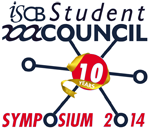Michal Linial, PhD
Director of The Sudarsky Center for Computational Biology
Department of Biological Chemistry
Institute of Life Sciences
The Hebrew University of Jerusalem, Israel
website: http://www.ls.huji.ac.il/michall/
Presentation Title: Good Things Come in Small Packages – Replicators and Innovators
Presentation Time: Sunday July 13, 9:00 - 10:00
Introduction by: Janet Kelso, Conference Co-chair
Abstract:
The overwhelming growth in the number of known protein sequences has significantly changed our ability to annotate the emerging collection of sequenced genomes. Granted, it remains a challenge to annotating new genomes. Still, the extensive sampling of organisms whose genomes are completely sequenced, has drastically improved the coverage and the overall quality of general annotations. Nevertheless, the gap in our understanding of protein functions keeps growing. We should revisit the notion that the richness of the functional space is fully captured and can be described by the collection of all 3D-structural building blocks. Computational methods allow finding (or at least seeking) some general design principles that explain protein function in a context of time, space and under extreme constrains. I will describe some of our attempts at narrowing the gap between sequence (easy) and function (hard).
In dealing with the fast expansion of the (protein) universe, one should keep in mind the large amounts of dark matter that it harbours. Our approach develops a bird’s eye view of the protein space. We have created a robust scaffold of the protein space. Navigating within this scaffold, called ProtoNet has led to the discovery of surprising connections among proteins and raised questions on the source of function’ novelty. We managed to automatically identify cases of hijacking functions that is often adopted by viruses. Using our navigation protocols, we identified instances of creativity and molecular innovation in sporadic organisms by tracing evolutionary footprints. I will be presenting our methodologies that enabled a systematic discovery of function.
There are 50 millions proteins, 10 millions eukaryotes and only 50 minutes. Therefore, my talk will focus on short proteins and peptides that ‘fly under the radar’ of standard annotation tools. We will emphasize the added value in using feature-based and alignment-free methods to complement sequence homology schemes. We illustrate the importance of analysing extreme life style such as marine cones and sea anemone to learn on gene novelty. In completing the tour on hidden functions, we will illustrate the advantage of revisiting sequence data using multiple binoculars. We will illustrate how one can expose explicit biological properties that are indirectly buried in the sequence. Search beyond sequence and structural homology can highlight determinants for modifications, stability, production speed and more. Conclusions will be drawn on several design principles and strategies of short proteins for executing modulatory functions in complex settings. As the title states (and as known to any living society) a balance between replicators and inventors is key to protein evolution and yields a rich collection of modulatory functions.
Biography:
Michal Linial is a Professor of Biochemistry, Molecular Biology and Bioinformatics at the Hebrew University of Jerusalem, Israel, where she heads the Israel Institute for Advanced Studies.
She received her PhD from the Hebrew University's Medical School (1986) in Biochemistry and Molecular Biology. During her post-doctoral training in Stanford University, she engaged in molecular neuroscience with the goal of deciphering the molecular makeup of the synapse. She joined the Hebrew University (1989) and was a driving force in merging computational and analytical tools with classical wet biology. She is a founder (1999) and the chair of the undergraduate and graduate joint program in Computer sciences and Life Sciences at the Hebrew University. She heads The Sudarsky Center for Computational Biology at the Hebrew University.
Her laboratory is active in the two arenas - She leads a wet lab as well as a computational group. Her research interests span a broad range of topics such as stem cells, neuronal differentiation, synapse regulation, cell biology of secretory systems and the molecular mechanisms that underlie behavior and metabolic diseases. With the maturation of large-scale technologies, she has become involved in developing methods for target selection in Structural Genomics, protein family classification and the development of methodologies for the analysis of large-scale biological data sets. She is particularly interested in introducing powerful computational tools to meet the needs of the biological and bio-medical research communities. Among the web tools developed by her research group are PANDORA, ProtoNet, and EVEREST. One of her main recent areas of activity is proteomics where she combines experimental, technological and computational work.
She is an ISCB’s vice-president, a member of its Board of Directors, and is active in the Conference and Education committees and the ISCB Students’ council. She served as the Chair of the European Conference in Computational Biology, and a member of the steering committees of RECOMB and ECCB.


